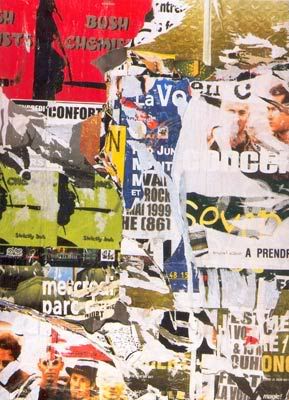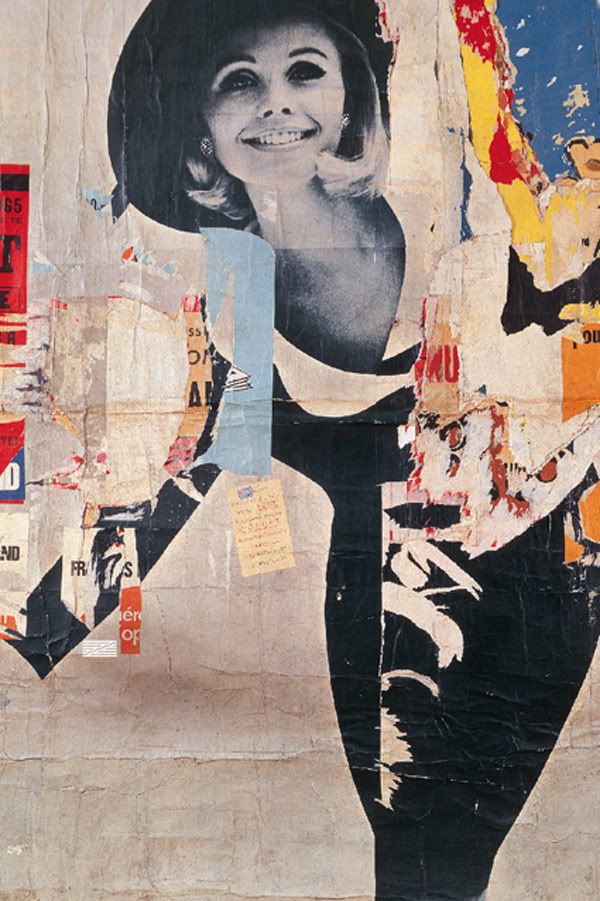Cuban bloggers talk about the UN vote to lift US sanctions against their country.
The Cuban Triangle was of the opinion that the vote served to remind people of a few things:
"First, Cuba knows how to do multilateral diplomacy.
Second, while many governments agree with U.S. criticisms of Cuban human rights practices, virtually all agree, as the resolution says, that U.S. sanctions have “adverse effects” on the Cuban people. And virtually all are willing to vote to urge the United States to lift the embargo.
Third, if a new U.S. Administration decides that it wants to work more closely with allies and other countries on the Cuba issue, U.S. sanctions – from the embargo to direct action against third-country banks and companies – are an obstacle."
Meanwhile, El Cafe Cubano sought to draw attention to what he thinks is the real issue:
"Isn't that special…”The U.N. General Assembly on Wednesday voted overwhelmingly for the favor of lifting the 46-year-old US trade embargo on communist-ruled Cuba.”
Alrighty then…What about FREE ELECTIONS and DEMOCRACY?"
Friday, October 31, 2008
Have Your Say: What does Africa want from the next US president?
I thought this was interesting also- just a collection of reader input.
'Human catastrophe' grips Congo
Fierce fighting between government and rebel forces in the Democratic Republic of Congo is causing a humanitarian catastrophe, the Red Cross has said.
It said the number of displaced people was growing by the hour and that the precarious security situation was making it difficult to deliver aid.
Intense diplomatic efforts are under way to end the crisis, which has displaced a total of 250,000 people.
A tense ceasefire is holding in and around the eastern city of Goma.
...
The BBC's Peter Greste in Goma says the road from the city is choked with human misery.
Article here.
Also read: Eyewitness: 'Chaos in Congo city'
More eyewitness accounts from bloggers in the area, including this heartbreaking video.
Here but for the Grace of God go I.
It said the number of displaced people was growing by the hour and that the precarious security situation was making it difficult to deliver aid.
Intense diplomatic efforts are under way to end the crisis, which has displaced a total of 250,000 people.
A tense ceasefire is holding in and around the eastern city of Goma.
...
The BBC's Peter Greste in Goma says the road from the city is choked with human misery.
Article here.
Also read: Eyewitness: 'Chaos in Congo city'
More eyewitness accounts from bloggers in the area, including this heartbreaking video.
Here but for the Grace of God go I.
Thursday, October 23, 2008
Tristeza en Colombia
Colombia has a really beautiful culture, and a lot of it comes from the interesting mish-mash of people.
Barranquilla Carnival:
Unfortunately, while mish-mashes can make for beautiful music, art, and dance, they can also sometimes make for conflict.
Colombia: Indigenous Protests and Murders Under Media Blackout
Wednesday, October 22nd, 2008 @ 16:52 UTC
by Juliana Rincón Parra
From Colombia, the indigenous groups in the Cauca department have made an international SOS to call attention on their plight. On their website, cric-colombia.org they explain how they have been protesting the human rights abuses they have been victim of, represented by the murder of one of their community leaders by hit men and the death threats on other regional and community leaders and spokespeople.
CNN coverage:
Uribe: Colombian police fired on protesters
Video of the incident.
"Pre-Uribe confession" story here.



Barranquilla Carnival:
Unfortunately, while mish-mashes can make for beautiful music, art, and dance, they can also sometimes make for conflict.
Colombia: Indigenous Protests and Murders Under Media Blackout
Wednesday, October 22nd, 2008 @ 16:52 UTC
by Juliana Rincón Parra
From Colombia, the indigenous groups in the Cauca department have made an international SOS to call attention on their plight. On their website, cric-colombia.org they explain how they have been protesting the human rights abuses they have been victim of, represented by the murder of one of their community leaders by hit men and the death threats on other regional and community leaders and spokespeople.
CNN coverage:
Uribe: Colombian police fired on protesters
Video of the incident.
"Pre-Uribe confession" story here.



Sunday, October 19, 2008
the Centre Pompidou and Jacques Villegle
I quite recently had the wonderful opportunity to visit the Centre Pompidou.

My favorite exhibition was Jacques Villegle.





There was also a wonderful futurism exhibition.

My favorite exhibition was Jacques Villegle.





There was also a wonderful futurism exhibition.
Iraqis leading the way in growing numbers of asylum-seekers, says UN agency
17 October 2008 – The number of people seeking asylum around the world is on the rise with Iraqis being by far the top nationality in search of safety, according to a report published by the United Nations refugee agency today.
Some 165,000 applications were submitted to the 44 industrialized countries included in the report in the first six months of this year, and Iraqis made up 12 per cent of all asylum claims lodged with 19,500 applications and some 20 per cent of those petitioning Sweden.
The UN High Commissioner for Refugees (UNHCR) report showed that the number of claims made by Iraqis was higher than the combined number of asylum claims submitted by Russia (9,400) and China (8,700), the second and third highest nationalities seeking asylum.
While the top three countries of origin for asylum-seekers saw either a downward or stable trend, the number of Somali claims lodged rose significantly, reflecting a deteriorating situation in the conflict-wracked Horn of Africa country. More than 7,400 Somalis were registered between January and June this year, compared to 5,000 for the same period last year.
Pakistan and Afghanistan also had large numbers of citizens seek asylum in the first half of 2008, with 6,300 claims each. For Afghanistan this represents a 22 per cent increase on the corresponding period for last year and a 42 per cent rise on 2006.
Although the total number of Iraqi asylum-seekers dropped by 18 per cent from the previous six months and 10 per cent from the first half of 2007, the overall upward trend of asylum claims continues. Data showed an increase of 9 per cent in 2007 compared to 2006 and 3 per cent from the first half of 2007.
According to the asylum trends report significant increases were registered by applicants from Mali, Zimbabwe, Myanmar, Afghanistan, Sri Lanka, Côte d’Ivoire, Georgia and the Democratic Republic of the Congo (DRC).
Assuming that current patterns remain unchanged, UNHCR say the number of asylum claims lodged during the whole of this year could reach 360,000, or 10 percent more than 2007.
The report also noted that an estimated 25,400 people submitted asylum claims to the United States, the largest recipient of new claims, representing 15 per cent of all applications lodged in the first six months of 2008. Canada ranked second as a country of destination with 16,800 applications, or around 10 per cent of all asylum claims lodged.
Article here.
Related: UN calls on European Union to uphold pledges to protect Iraqi refugees
Some 165,000 applications were submitted to the 44 industrialized countries included in the report in the first six months of this year, and Iraqis made up 12 per cent of all asylum claims lodged with 19,500 applications and some 20 per cent of those petitioning Sweden.
The UN High Commissioner for Refugees (UNHCR) report showed that the number of claims made by Iraqis was higher than the combined number of asylum claims submitted by Russia (9,400) and China (8,700), the second and third highest nationalities seeking asylum.
While the top three countries of origin for asylum-seekers saw either a downward or stable trend, the number of Somali claims lodged rose significantly, reflecting a deteriorating situation in the conflict-wracked Horn of Africa country. More than 7,400 Somalis were registered between January and June this year, compared to 5,000 for the same period last year.
Pakistan and Afghanistan also had large numbers of citizens seek asylum in the first half of 2008, with 6,300 claims each. For Afghanistan this represents a 22 per cent increase on the corresponding period for last year and a 42 per cent rise on 2006.
Although the total number of Iraqi asylum-seekers dropped by 18 per cent from the previous six months and 10 per cent from the first half of 2007, the overall upward trend of asylum claims continues. Data showed an increase of 9 per cent in 2007 compared to 2006 and 3 per cent from the first half of 2007.
According to the asylum trends report significant increases were registered by applicants from Mali, Zimbabwe, Myanmar, Afghanistan, Sri Lanka, Côte d’Ivoire, Georgia and the Democratic Republic of the Congo (DRC).
Assuming that current patterns remain unchanged, UNHCR say the number of asylum claims lodged during the whole of this year could reach 360,000, or 10 percent more than 2007.
The report also noted that an estimated 25,400 people submitted asylum claims to the United States, the largest recipient of new claims, representing 15 per cent of all applications lodged in the first six months of 2008. Canada ranked second as a country of destination with 16,800 applications, or around 10 per cent of all asylum claims lodged.
Article here.
Related: UN calls on European Union to uphold pledges to protect Iraqi refugees
Saturday, October 18, 2008
Alma Har'el, Alphonse Mucha, my world goes in circles, I smile
As seen in my last post, I am now an ardent fan of Alma Har'el. This discovery made today amazing, but the best part was seeing how wonderfully life can overlap itself sometimes. I was reading this interview about how she did the Elephant Gun video (SO GOOD), and I came across this part:
SRO: What inspirations helped you design and create the shoot for ‘Elephant’?
Alma: After meeting with Ben in NY, I went to Israel and stayed in my mother’s house for 2 weeks; I listened to the song late at night and dreamt what it would look like. I knew it would have a dance scene, but that the dancers would be tipsy and a little drunk— it’s that feeling at the end of the night when you feel you have a lot in common with everybody who’s in the room, whether you know them or not. Then Zach and I spoke on the phone about it and I asked him: “Zach, who is singing the song?” and he said - “a safari hunter”. That’s how it started.
It went through a few changes— In the beginning I wanted to shoot in a bar; then I decided on the space covered with old maps of the world, and I really got a handle on how I wanted it to look. The color palette was all coming from that and from Mucha paintings.
This was great, because I was just about to do a post on Alphonse Mucha. I even had this website about him open on my desktop as I read this interview. So I guess it's no wonder I was feeling the Elephant Gun video so much.



I'm typically a fan of art nouveau - and man, he's just the bee's kness. A classic! Offical website here.
I also really love this idea of decorating the walls with old maps. I hate modern maps, though. Maybe I should start collecting old maps and one day decorate my house like the Elephant Gun video...
SRO: What inspirations helped you design and create the shoot for ‘Elephant’?
Alma: After meeting with Ben in NY, I went to Israel and stayed in my mother’s house for 2 weeks; I listened to the song late at night and dreamt what it would look like. I knew it would have a dance scene, but that the dancers would be tipsy and a little drunk— it’s that feeling at the end of the night when you feel you have a lot in common with everybody who’s in the room, whether you know them or not. Then Zach and I spoke on the phone about it and I asked him: “Zach, who is singing the song?” and he said - “a safari hunter”. That’s how it started.
It went through a few changes— In the beginning I wanted to shoot in a bar; then I decided on the space covered with old maps of the world, and I really got a handle on how I wanted it to look. The color palette was all coming from that and from Mucha paintings.
This was great, because I was just about to do a post on Alphonse Mucha. I even had this website about him open on my desktop as I read this interview. So I guess it's no wonder I was feeling the Elephant Gun video so much.



I'm typically a fan of art nouveau - and man, he's just the bee's kness. A classic! Offical website here.
I also really love this idea of decorating the walls with old maps. I hate modern maps, though. Maybe I should start collecting old maps and one day decorate my house like the Elephant Gun video...
Friday, October 17, 2008
Beirut
Sadly, I'd never actually watched the music videos for these songs before tonight- they are AWESOME.
Beirut is really really cool, and now I additionally have mad respect for Alma Har'el who directed these videos
Beirut is really really cool, and now I additionally have mad respect for Alma Har'el who directed these videos
Rape Victims’ Words Help Jolt Congo Into Change
By JEFFREY GETTLEMAN
Published: October 17, 2008
BUKAVU, Congo — Honorata Kizende looked out at the audience and began with a simple, declarative sentence.
“There was no dinner,” she said.
“It was me who was dinner. Me, because they kicked me roughly to the ground, and they ripped off all my clothes, and between the two of them, they held my feet. One took my left foot, one took my right, and the same with my arms, and between the two of them they proceeded to rape me. Then all five of them raped me.”
The audience, which had been called together by local and international aid groups and included everyone from high-ranking politicians to street kids with no shoes, stared at her in disbelief.
Congo, it seems, is finally facing its horrific rape problem, which United Nations officials have called the worst sexual violence in the world. Tens of thousands of women, possibly hundreds of thousands, have been raped in the past few years in this hilly, incongruously beautiful land and many of these rapes have been marked by a level of brutality that is shocking even by the twisted standards of a place haunted by warlords and drug-crazed child soldiers.
After years of denial and shame, the silence is being broken. Because of stepped-up efforts in the past nine months by international organizations and the Congolese government, rapists are no longer able to count on a culture of impunity. Of course, countless men still get away with assaulting women. But more and more are getting caught, prosecuted and put behind bars.
Read the whole article here
Published: October 17, 2008
BUKAVU, Congo — Honorata Kizende looked out at the audience and began with a simple, declarative sentence.
“There was no dinner,” she said.
“It was me who was dinner. Me, because they kicked me roughly to the ground, and they ripped off all my clothes, and between the two of them, they held my feet. One took my left foot, one took my right, and the same with my arms, and between the two of them they proceeded to rape me. Then all five of them raped me.”
The audience, which had been called together by local and international aid groups and included everyone from high-ranking politicians to street kids with no shoes, stared at her in disbelief.
Congo, it seems, is finally facing its horrific rape problem, which United Nations officials have called the worst sexual violence in the world. Tens of thousands of women, possibly hundreds of thousands, have been raped in the past few years in this hilly, incongruously beautiful land and many of these rapes have been marked by a level of brutality that is shocking even by the twisted standards of a place haunted by warlords and drug-crazed child soldiers.
After years of denial and shame, the silence is being broken. Because of stepped-up efforts in the past nine months by international organizations and the Congolese government, rapists are no longer able to count on a culture of impunity. Of course, countless men still get away with assaulting women. But more and more are getting caught, prosecuted and put behind bars.
Read the whole article here
Sunday, October 12, 2008
Rain Forest Tribe’s Charge of Neglect Is Shrouded by Religion and Politics
By SIMON ROMERO
Published: October 6, 2008
PUERTO AYACUCHO, Venezuela — Three years after President Hugo Chávez expelled American missionaries from the Venezuelan Amazon, accusing them of using proselytism of remote tribes as a cover for espionage, resentment is festering here over what some tribal leaders say was official negligence that led to the deaths of dozens of indigenous children and adults.
President Hugo Chávez expelled missionaries from the Amazon but has increased social welfare programs there.
Some leaders of the Yanomami, one of South America’s largest forest-dwelling tribes, say that 50 people in their communities in the southern rain forest have died since the expulsion of the missionaries in 2005 because of recurring shortages of medicine and fuel, and unreliable transportation out of the jungle to medical facilities.
Mr. Chávez’s government disputes the claims and points to more spending than ever on social welfare programs for the Yanomami. The spending is part of a broader plan to assert greater military and social control over expanses of rain forest that are viewed as essential for Venezuela’s sovereignty.
The Yanomami leaders are wading into a politicized debate about how officials react to health care challenges faced by the Yanomami and other Amazonian tribes. In recent interviews here, government officials contended that the Yanomami could be exaggerating their claims to win more resources from the government and undercut its authority in the Amazon.
Meanwhile, the Yanomami claims come amid growing concern in Venezuela over indigenous health care after a scandal erupted in August over a tepid official response to a mystery disease that killed 38 Warao Indians in the country’s northeast.
“This government makes a big show of helping the Yanomami, but rhetoric is one thing and reality another,” said Ramón González, 49, a Yanomami leader from the village of Yajanamateli who traveled recently to Puerto Ayacucho, the capital of Amazonas State, to ask military officials and civilian doctors for improved health care.
“The truth is that Yanomami lives are still considered worthless,” said Mr. González, who was converted to Christianity by New Tribes Mission, a Florida group expelled in 2005. “The boats, the planes, the money, it’s all for the criollos, not for us,” he said, using a term for nonindigenous Venezuelans.
The Yanomami leaders offer a far different image of the tribe than those found in anthropology books, which often depict it in Rousseaulike settings with painted faces and clad in loincloths.
There are about 26,000 Yanomami in the Amazon rain forest, in Venezuela and Brazil, where they subsist as seminomadic hunters and cultivators of crops like manioc and bananas.
They remain susceptible to ailments for which they have weak defenses, including respiratory diseases and drug-resistant strains of malaria. In Puerto Ayacucho, they can be seen wandering through the traffic-clogged streets, clad in the modern uniform of T-shirts and baggy pants, toting cellphones.
This and the rest of the article here
Published: October 6, 2008
PUERTO AYACUCHO, Venezuela — Three years after President Hugo Chávez expelled American missionaries from the Venezuelan Amazon, accusing them of using proselytism of remote tribes as a cover for espionage, resentment is festering here over what some tribal leaders say was official negligence that led to the deaths of dozens of indigenous children and adults.
President Hugo Chávez expelled missionaries from the Amazon but has increased social welfare programs there.
Some leaders of the Yanomami, one of South America’s largest forest-dwelling tribes, say that 50 people in their communities in the southern rain forest have died since the expulsion of the missionaries in 2005 because of recurring shortages of medicine and fuel, and unreliable transportation out of the jungle to medical facilities.
Mr. Chávez’s government disputes the claims and points to more spending than ever on social welfare programs for the Yanomami. The spending is part of a broader plan to assert greater military and social control over expanses of rain forest that are viewed as essential for Venezuela’s sovereignty.
The Yanomami leaders are wading into a politicized debate about how officials react to health care challenges faced by the Yanomami and other Amazonian tribes. In recent interviews here, government officials contended that the Yanomami could be exaggerating their claims to win more resources from the government and undercut its authority in the Amazon.
Meanwhile, the Yanomami claims come amid growing concern in Venezuela over indigenous health care after a scandal erupted in August over a tepid official response to a mystery disease that killed 38 Warao Indians in the country’s northeast.
“This government makes a big show of helping the Yanomami, but rhetoric is one thing and reality another,” said Ramón González, 49, a Yanomami leader from the village of Yajanamateli who traveled recently to Puerto Ayacucho, the capital of Amazonas State, to ask military officials and civilian doctors for improved health care.
“The truth is that Yanomami lives are still considered worthless,” said Mr. González, who was converted to Christianity by New Tribes Mission, a Florida group expelled in 2005. “The boats, the planes, the money, it’s all for the criollos, not for us,” he said, using a term for nonindigenous Venezuelans.
The Yanomami leaders offer a far different image of the tribe than those found in anthropology books, which often depict it in Rousseaulike settings with painted faces and clad in loincloths.
There are about 26,000 Yanomami in the Amazon rain forest, in Venezuela and Brazil, where they subsist as seminomadic hunters and cultivators of crops like manioc and bananas.
They remain susceptible to ailments for which they have weak defenses, including respiratory diseases and drug-resistant strains of malaria. In Puerto Ayacucho, they can be seen wandering through the traffic-clogged streets, clad in the modern uniform of T-shirts and baggy pants, toting cellphones.
This and the rest of the article here
Saturday, October 11, 2008
With Spotlight on Pirates, Somalis on Land Waste Away in the Shadows
By JEFFREY GETTLEMAN
Published: October 10, 2008
AFGOOYE, Somalia — Just step into a feeding center here, and the sense of hopelessness is overwhelming.
Dozens of women sit with listless babies in their laps, snapping their fingers, trying to get a flicker of life out of their dying children.
Little eyes close. Wizened 1-year-olds struggle to breathe. This is the place where help is supposed to be on its way. But the nurses in the filthy smocks are besieged. From the doorway, you can see the future of Somalia fading away.
While the audacity of a band of Somali pirates who hijacked a ship full of weapons has grabbed the world’s attention, it is the slow-burn suffering of millions of Somalis that seems to go almost unnoticed.
The suffering is not new. Or especially surprising. This country on the edge of Africa has been slowly, but inexorably, sliding toward an abyss for the past year and a half — or, some would argue, for the past 17. United Nations officials have called Somalia “the forgotten crisis.”
The causes are unemployment, drought, inflation, a squeeze on global food supplies and a war that will not end. Fighting between Somalia’s weak transitional government and a determined Islamist insurgency has been heating up in the past few weeks, driving thousands from their homes and cutting people off from food. The hospital wards here are one indicator of the conflict’s intensity.
“In the past two months,” said Muhammad Hussein, a doctor at a feeding center in Afgooye, “our patients have doubled.”
In August, 200 women with emaciated babies lined up outside his clinic every day. Today, there are 400.
More than three million people, about half Somalia’s population, need emergency rations to survive. Nobody seems to like it. Many say they feel humiliated.
“That’s all we talk about: when will the next handout come,” said Zenab Ali Osman, a grandmother raising her daughter’s children.
Before fighting drove her from Mogadishu, the capital, to Afgooye’s endless refugee camps of gumdrop-shaped huts made of plastic bags and in some cases soiled T-shirts, Ms. Zenab used to wash clothes for a living. On a good day, she made the equivalent of 80 cents.
The civil war has eviscerated the economy, leaving so many people to survive on pennies. But out on the high seas, it is a different story. Pirates thrive off this same lawlessness, making millions of dollars by hijacking ships in Somalia’s unpatrolled waters and demanding hefty ransoms to free them. On Sept. 25, a band of pirates seized a Ukrainian freighter full of tanks and other weapons bound for Kenya.
The pirates are asking for $20 million, an unfathomable amount here. Negotiations are still going on, and the price will probably be closer to $5 million. No one wants to pay the pirates, but in this case, with 20 crew members being held hostage on a ship full of explosives, giving in may be the safest way out.
But the pirates may be growing impatient. According to The Associated Press, they threatened Friday night to blow up the ship if they were not paid the money within three days.
“I pray to God they are caught,” said Dhuho Abdi Omar, a mother who was waiting at a feeding center in Afgooye with her 2-year-old girl, who had not eaten for two weeks. “These pirates are blocking our food.”
Not everyone agreed. Many young men in the camps seemed to lionize the gunmen of the seas.
“They’re tough guys,” said Muhammad Warsame, 22. “And they’re protecting our coast.”
The pirates have made the same argument, saying they hijack ships in response to illegal fishing and dumping.
“They’re our marines,” said Jaemali Argaga, a militia leader.
Somalia has not had any marines, or national army or navy of any significance, since the central government imploded in 1991. Clan-based warlords carved the country into fiefs, preying upon the population. People eventually got fed up, and in the summer of 2006, a grass-roots Islamist movement drove away the warlords.
Ethiopia and the United States accused the Islamists of sheltering terrorists, and in the winter of 2006, Ethiopian and American forces ousted the Islamists. But the Islamists are back. Supported by businessmen and war profiteers, Islamist guerrilla fighters are viciously battling the weak government forces and Ethiopian soldiers. Civilians are often caught in between. Thousands have been killed in the past year and a half.
Many aid workers have fled. The United Nations World Food Program is one of the last organizations with a large staff inside Somalia. Denise Brown, the deputy country director, said the environment was increasingly hostile. And desperate.
Thousands of hungry people besieged a convoy of 35 United Nations-chartered food trucks moving through Mogadishu two weeks ago. They stripped the trucks clean, looting more than two million pounds of food.
“It’s unprecedented,” Ms. Brown said “Things just went haywire.”
That has taken food out of the mouths of people like Ms. Zenab, whose daughter was one of the 20 street sweepers in Mogadishu killed by a bomb in August that was buried in a pile of garbage.
She is now helping raise several grandchildren. Amina, 13 months old, will not eat. The two sat the other day on a cot covered with flies. All around them were babies looking up at the ceiling with round wet eyes, some with faces covered in tape because they were too sick to swallow and were being fed milk through their noses.
Whom does she blame?
“Those with guns,” Ms. Zenab said. “Whoever they are.”
Source.
Published: October 10, 2008
AFGOOYE, Somalia — Just step into a feeding center here, and the sense of hopelessness is overwhelming.
Dozens of women sit with listless babies in their laps, snapping their fingers, trying to get a flicker of life out of their dying children.
Little eyes close. Wizened 1-year-olds struggle to breathe. This is the place where help is supposed to be on its way. But the nurses in the filthy smocks are besieged. From the doorway, you can see the future of Somalia fading away.
While the audacity of a band of Somali pirates who hijacked a ship full of weapons has grabbed the world’s attention, it is the slow-burn suffering of millions of Somalis that seems to go almost unnoticed.
The suffering is not new. Or especially surprising. This country on the edge of Africa has been slowly, but inexorably, sliding toward an abyss for the past year and a half — or, some would argue, for the past 17. United Nations officials have called Somalia “the forgotten crisis.”
The causes are unemployment, drought, inflation, a squeeze on global food supplies and a war that will not end. Fighting between Somalia’s weak transitional government and a determined Islamist insurgency has been heating up in the past few weeks, driving thousands from their homes and cutting people off from food. The hospital wards here are one indicator of the conflict’s intensity.
“In the past two months,” said Muhammad Hussein, a doctor at a feeding center in Afgooye, “our patients have doubled.”
In August, 200 women with emaciated babies lined up outside his clinic every day. Today, there are 400.
More than three million people, about half Somalia’s population, need emergency rations to survive. Nobody seems to like it. Many say they feel humiliated.
“That’s all we talk about: when will the next handout come,” said Zenab Ali Osman, a grandmother raising her daughter’s children.
Before fighting drove her from Mogadishu, the capital, to Afgooye’s endless refugee camps of gumdrop-shaped huts made of plastic bags and in some cases soiled T-shirts, Ms. Zenab used to wash clothes for a living. On a good day, she made the equivalent of 80 cents.
The civil war has eviscerated the economy, leaving so many people to survive on pennies. But out on the high seas, it is a different story. Pirates thrive off this same lawlessness, making millions of dollars by hijacking ships in Somalia’s unpatrolled waters and demanding hefty ransoms to free them. On Sept. 25, a band of pirates seized a Ukrainian freighter full of tanks and other weapons bound for Kenya.
The pirates are asking for $20 million, an unfathomable amount here. Negotiations are still going on, and the price will probably be closer to $5 million. No one wants to pay the pirates, but in this case, with 20 crew members being held hostage on a ship full of explosives, giving in may be the safest way out.
But the pirates may be growing impatient. According to The Associated Press, they threatened Friday night to blow up the ship if they were not paid the money within three days.
“I pray to God they are caught,” said Dhuho Abdi Omar, a mother who was waiting at a feeding center in Afgooye with her 2-year-old girl, who had not eaten for two weeks. “These pirates are blocking our food.”
Not everyone agreed. Many young men in the camps seemed to lionize the gunmen of the seas.
“They’re tough guys,” said Muhammad Warsame, 22. “And they’re protecting our coast.”
The pirates have made the same argument, saying they hijack ships in response to illegal fishing and dumping.
“They’re our marines,” said Jaemali Argaga, a militia leader.
Somalia has not had any marines, or national army or navy of any significance, since the central government imploded in 1991. Clan-based warlords carved the country into fiefs, preying upon the population. People eventually got fed up, and in the summer of 2006, a grass-roots Islamist movement drove away the warlords.
Ethiopia and the United States accused the Islamists of sheltering terrorists, and in the winter of 2006, Ethiopian and American forces ousted the Islamists. But the Islamists are back. Supported by businessmen and war profiteers, Islamist guerrilla fighters are viciously battling the weak government forces and Ethiopian soldiers. Civilians are often caught in between. Thousands have been killed in the past year and a half.
Many aid workers have fled. The United Nations World Food Program is one of the last organizations with a large staff inside Somalia. Denise Brown, the deputy country director, said the environment was increasingly hostile. And desperate.
Thousands of hungry people besieged a convoy of 35 United Nations-chartered food trucks moving through Mogadishu two weeks ago. They stripped the trucks clean, looting more than two million pounds of food.
“It’s unprecedented,” Ms. Brown said “Things just went haywire.”
That has taken food out of the mouths of people like Ms. Zenab, whose daughter was one of the 20 street sweepers in Mogadishu killed by a bomb in August that was buried in a pile of garbage.
She is now helping raise several grandchildren. Amina, 13 months old, will not eat. The two sat the other day on a cot covered with flies. All around them were babies looking up at the ceiling with round wet eyes, some with faces covered in tape because they were too sick to swallow and were being fed milk through their noses.
Whom does she blame?
“Those with guns,” Ms. Zenab said. “Whoever they are.”
Source.
Monday, October 6, 2008
Lucia Cullinane
An artist from Madrid, now living in Ireland:
A Tea Time / La merienda

Maddonna with child

The cover of Dublin's fashion magazine "Choice"

The Mermaid Dance / El baile de las sirenas

See her website for more. I think she's pretty rad.
A Tea Time / La merienda

Maddonna with child

The cover of Dublin's fashion magazine "Choice"

The Mermaid Dance / El baile de las sirenas

See her website for more. I think she's pretty rad.
Wednesday, October 1, 2008
Obligatory Economy Post
Various articles:
here
aqui
and here
Really, I don't typically follow the business pages, and even when this started to hit the front pages, it wasn't as much on my radar as it should have been. But seeing how much it is also affecting the rest of the world has underscored its importance to everyone. What's going to happen to the global food prices crisis? Or the Millenium Development Goals? How will a huge government bailout affect the money given to humanitarian agencies or to foreign aid? How will charities fare?
here
aqui
and here
Really, I don't typically follow the business pages, and even when this started to hit the front pages, it wasn't as much on my radar as it should have been. But seeing how much it is also affecting the rest of the world has underscored its importance to everyone. What's going to happen to the global food prices crisis? Or the Millenium Development Goals? How will a huge government bailout affect the money given to humanitarian agencies or to foreign aid? How will charities fare?
Subscribe to:
Posts (Atom)
